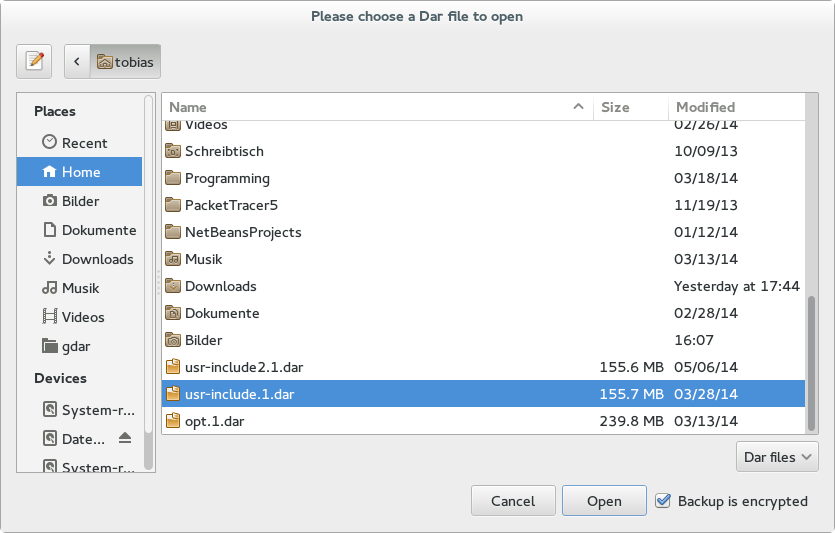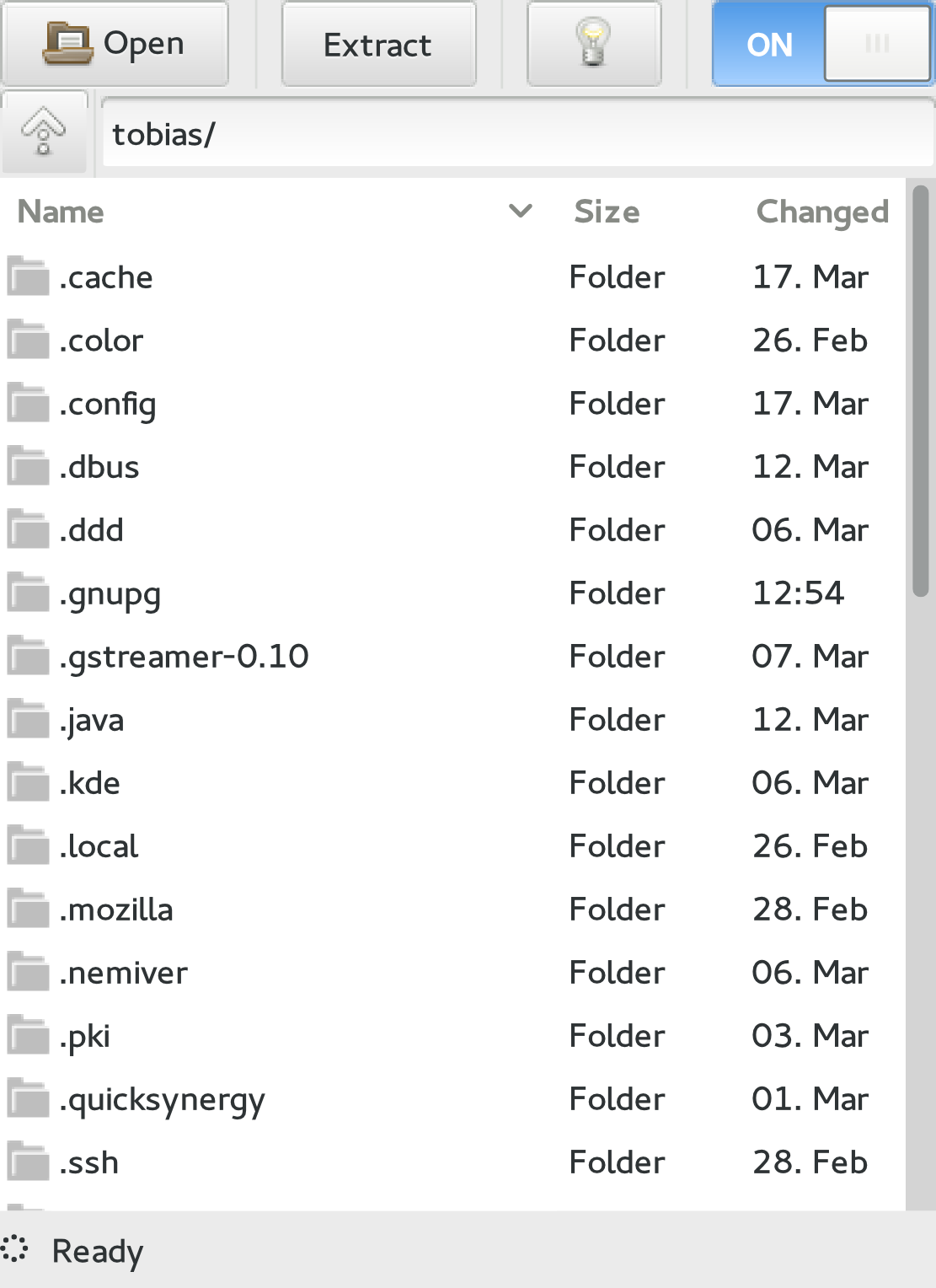A graphical user interface for Linux to browse and extract dar backup archives
You can run Gdar not only on Gnome desktop but also on KDE or any other Linux desktop environment. The GUI is written in gtkmm, as backend libdar is used.
On the openSUSE Build Service you can find a rpm packet repository for openSUSE and Fedora to get always the latest version of Gdar: software.opensuse.org
Gdar is an Open Source project. The source code is available on github.com
News
- 17. Mai 2021 - Release version 1.1
- 27. Feb 2015 - Release version 1.0
- 16. Oct 2014 - Add feature to edit the path in the Entry widget
- 15. Sep 2014 - Open dar archives from your file browser via “open with Gdar”!
- 14. Sep 2014 - Fix bug when open archives with “.” in file name
Screenshots
Manual
Open a dar archive by clicking the open button. When the archive is encrypted please activate the checkbox. Afterwards enter the password and choose the chipher options. Please be patient while the index (catalogue) of the archive is being read. The symbol in front of the Name column indicates whether this is a file or a folder. By double clicking on a folder you can move into this directory. By clicking the Up button you can change into the parent directory. Use the switch to display hidden files. To extract a file or folder select it and click the button Extract and choose a destination. The info button (light bulb) gives you a brief overview of the archive.
Prepare when cloning from git
$ git clone https://github.com/peckto/gdar.git
$ cd gdar
$ ./autogen.shBuild
$ ./configure [--enable-libdar64] [--enable-date_s]
$ make
# make install
# gtk-update-icon-cache /usr/share/icons/hicolorRequired development tools
- intltool
- autoconf
- make
- gcc-c++ / g++
- gtkmm3
- libdar >= 2.4.8
- attr (libattr)
- gcrypt
- lzo2
- bz2 (bzib)
- libz
Example
You can create a full backup of your home partition with dar by issuning the following command:
# dar -R /home/ -c /var/backup/home-$(date "+%Y%m%d") In case of recovery just open the dar archive with Gdar.
For a detailed documentation about the dar command-line tool visit: dar.linux.free.fr




